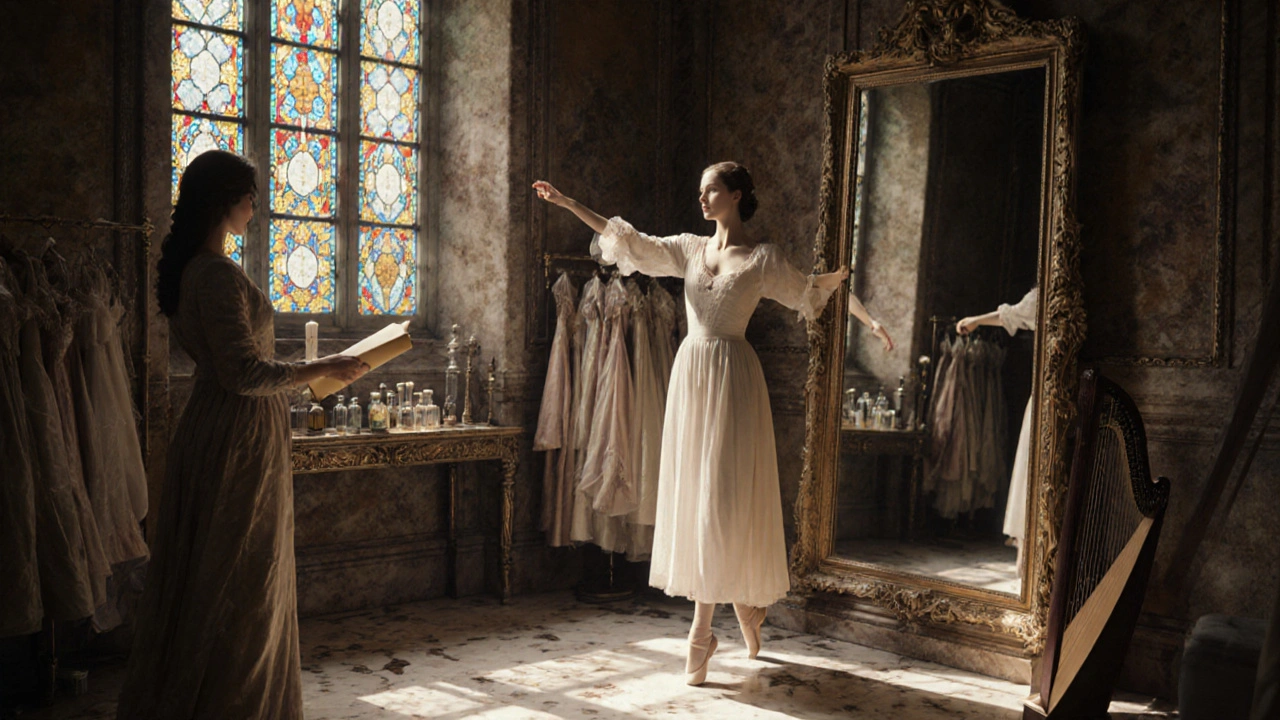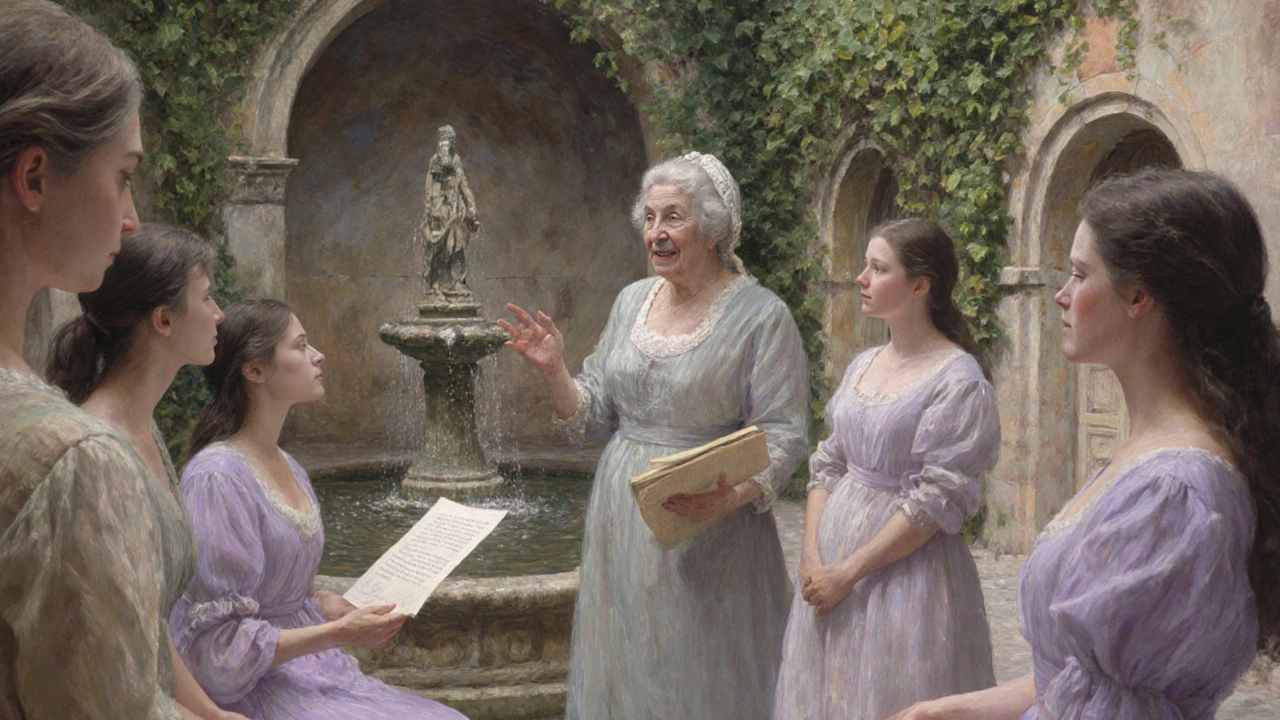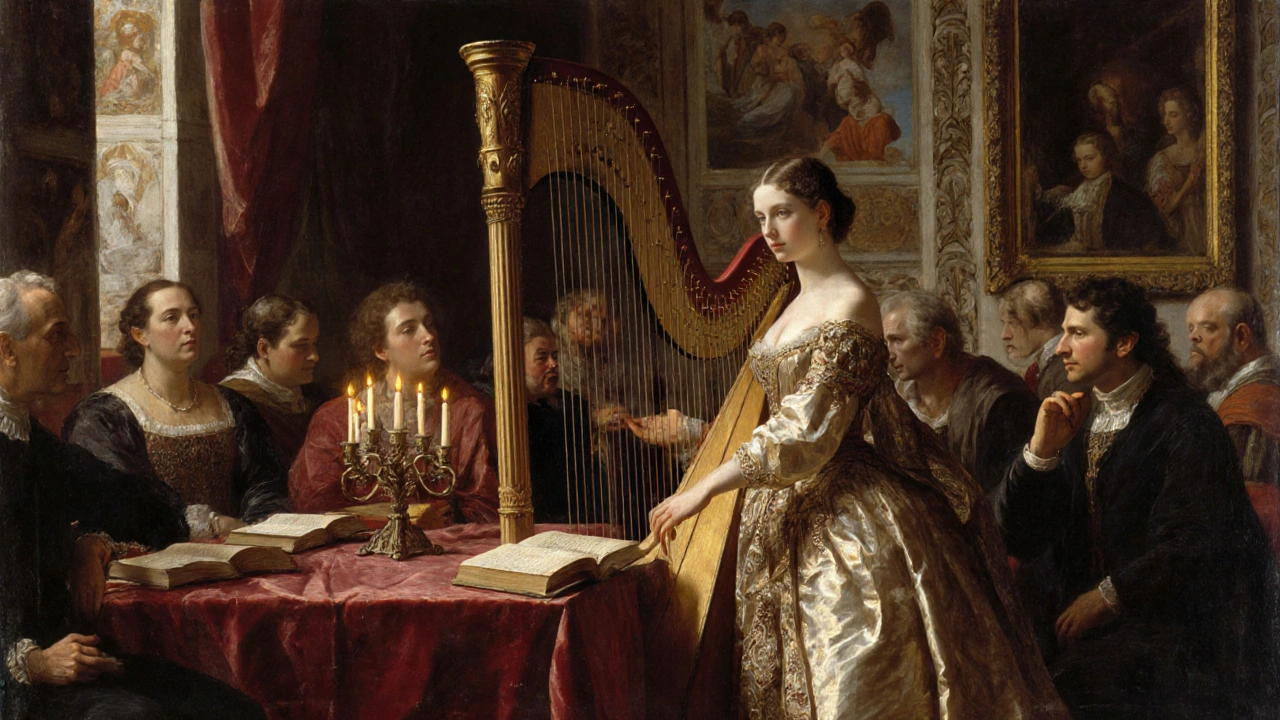Curious about how courtesans trained for success? These weren’t just companions-they were highly educated women who mastered art, politics, and conversation to survive-and thrive-in a world that offered them few other paths. Their training was intense, deliberate, and often more rigorous than what men received in universities at the time.
What Exactly Was a Courtesan?
A courtesan wasn’t a prostitute. She was a highly skilled companion to wealthy men-nobles, merchants, artists, and rulers. Her value came from her mind, not just her body. In 16th-century Italy and 18th-century France, courtesans were known for their wit, charm, and cultural fluency. They hosted salons, advised politicians, and influenced fashion and art.
Think of them as the original influencers: they built personal brands through intellect, style, and social strategy. Some, like Veronica Franco in Venice, published poetry and defended themselves in court. Others, like Madame de Pompadour in France, became de facto political advisors to kings.
Why Did Their Training Matter?
For most women in early modern Europe, options were limited: marry young, enter a convent, or work in poverty. Courtesans carved out a rare space of autonomy. But that freedom came at a cost-constant pressure to stay relevant, beautiful, and intellectually sharp.
Success meant survival. A single misstep in conversation, a poorly timed gesture, or an outdated dress could end a career. Their training wasn’t about seduction-it was about control. Control over how they were seen, spoken to, and remembered.
How Did They Train?
- Language & Literature: They learned Latin, French, and Italian. Many read Plato, Petrarch, and Machiavelli. They practiced writing letters and poetry to impress patrons.
- Music & Dance: Courtesans studied harp, lute, and voice. Dance wasn’t just performance-it was body language. Every step, turn, and glance was choreographed to convey confidence and grace.
- Etiquette & Deception: They learned how to navigate royal courts, avoid gossip traps, and read body language. A well-timed silence was more powerful than a clever reply.
- Appearance: Their wardrobe was a weapon. Tailored gowns, subtle perfume, perfectly arranged hair-all signaled status. They hired dressmakers, jewelers, and even dermatologists (yes, they existed).
- Politics & Networking: They attended debates, met philosophers, and cultivated relationships with artists. Their salons were where real power was negotiated.

Pros and Cons
| Pros | Cons |
|---|---|
| Financial independence-some earned more than male merchants | Lifetime risk of scandal, exile, or arrest |
| Access to education, art, and political influence | Dependent on male patrons; no legal rights |
| Freedom from arranged marriage and domestic abuse | Social isolation; often cut off from family |
| Legacy: many became writers, patrons, and cultural icons | Most faded into obscurity after age 30 |
When Was Their Training Most Effective?
Their methods worked best in cities with thriving elite cultures-Venice, Florence, Paris, and later London. These places had wealthy patrons who valued intellect as much as beauty. A courtesan in a small town had little chance. Success required a stage.
It also worked best during times of political instability. When kings needed trusted confidants, courtesans filled the gap. Madame de Pompadour didn’t just host parties-she helped choose ministers and shaped French foreign policy.

Common Mistakes to Avoid
- Confusing charm with manipulation: Many courtesans failed because they tried to control too hard. The most successful ones made patrons feel like they were in charge-even when they weren’t.
- Ignoring their own growth: Those who stopped learning-whether by resting on past beauty or refusing to read new books-were quickly replaced. One Venetian courtesan was dismissed after she couldn’t discuss Galileo’s latest findings.
- Trusting too deeply: Emotional attachment was dangerous. The most enduring courtesans kept relationships professional. Love was a liability. Loyalty was a currency.
FAQ
Were courtesans considered respectable?
It depended on the city and the patron. In Venice, some courtesans were invited to weddings and baptisms. In Rome, the Church condemned them. But even in hostile places, they were often the only women allowed to speak freely in male-dominated spaces.
Did courtesans ever marry?
Sometimes-but only after leaving the life. A few, like Veronica Franco, married into nobility after gaining wealth and reputation. But marriage usually meant giving up their independence. Most chose freedom over a title.
How were courtesans different from mistresses?
Mistresses were kept by men in secret, often with little public role. Courtesans were public figures. They had their own homes, hosted events, and were known by name. A mistress was owned. A courtesan was consulted.
Did men ever train to be courtesans?
No. But some men became catamites or page boys in aristocratic courts-similar roles, but with far less cultural power. Women courtesans held unique influence because they were allowed to be both desirable and intelligent.
What happened to courtesans after they aged?
Many retired quietly. Some opened schools for young women, teaching music, etiquette, and letters. Others became nuns or lived off pensions from former patrons. A few wrote memoirs. Only a handful became famous enough to be remembered by history.
What’s Next?
If you’re fascinated by how women shaped power in a world that denied them formal authority, look into the lives of Veronica Franco, Ninon de Lenclos, or Olympe de Gouges. Their stories aren’t about romance-they’re about strategy, resilience, and the quiet art of surviving on your own terms.





Bruce Shortz on 20 November 2025, AT 17:10 PM
Man, I never realized how much strategy went into being a courtesan. It’s like they were doing MBA-level emotional intelligence before MBA programs existed. The part about silence being more powerful than a clever reply? That’s straight-up modern leadership training right there.
And the wardrobe as a weapon? I’m stealing that idea for my next job interview.